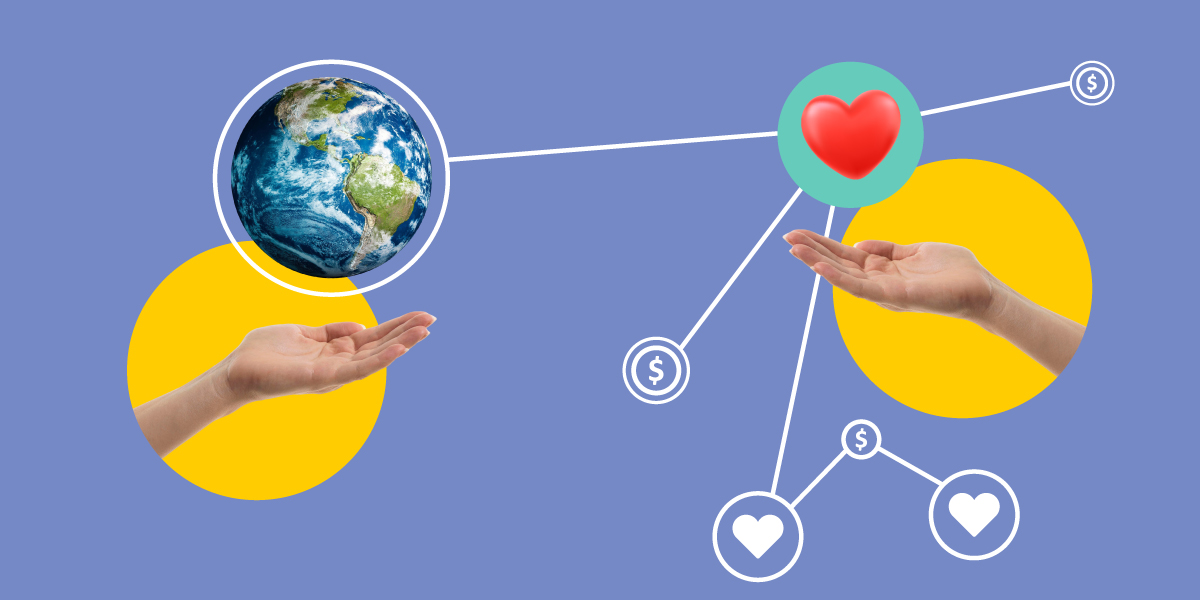Peer-to-Peer Fundraising Tips to Drive Results

How does your nonprofit connect with new donors? Do you post frequently on social media in hopes of catching people’s attention? Do you host community events to introduce locals to your mission? No matter how you spread the word, don’t forget that you don’t have to do it alone.
28% of donors rely on recommendations from friends and family to find new causes to support. By tapping into your existing donors and volunteers’ networks, you can reach more people who are likely to be passionate about your work.
Peer-to-peer fundraisers empower your most enthusiastic supporters to raise money for your organization. Whether you’re planning a virtual scavenger hunt event or a Read-A-Thon, follow these essential peer-to-peer fundraising tips to set participants up for success and secure lasting support.
Recruit Participants Strategically
Your peer-to-peer fundraising results depend on how well participants promote your cause to their friends and family. Because of this, you must recruit individuals willing to engage new donors in your cause.
While schools enlist their students in these peer-to-peer fundraising roles, other nonprofits must search their donor databases for participants. Rather than sending a generic email to your entire audience, encouraging them to sign up for your peer-to-peer fundraiser, pinpoint the most promising individuals by looking for specific indicators. For example, consider:
- Giving history: Has this donor contributed consistently to your nonprofit year after year? If they’ve supported your mission for a long time, they’re likely committed to your organization’s success and know enough about its work to represent it in your next fundraiser.
- Volunteer involvement: Do they regularly commit their time, energy, and skills to move your mission forward? Maybe they’ve served as a volunteer team leader or mentor in your organization’s mentorship program. If that’s the case, they’ll likely be interested in taking the lead in your next fundraising push.
- Event participation: Is this person a familiar face at many of your nonprofit’s events? Frequent event attendance indicates they feel a sense of belonging and connection to your mission. They may be interested in deepening this connection by taking a more active role in your fundraising efforts.
- Social media engagement: Are they vocal members of your organization’s social media community? If so, they’ve already demonstrated a willingness to speak out about your cause online and create buzz among their followers.
To further hone your outreach, consider using predictive AI tools to assess past behavior and automatically identify prime candidates for your peer-to-peer fundraiser. For instance, the AI might pick up on donors who have demonstrated increasing interest in your cause over the past few months, such as subscribing to text messages and attending events.
Use Intuitive Peer-to-Peer Fundraising Software
Before peer-to-peer participants can begin collecting donations on your nonprofit’s behalf, they must create individual fundraising pages. That’s where online fundraising software comes in handy.
Look for a peer-to-peer platform with these features:
- Donation page creation. Participants should be able to customize their donation pages with their personal funding goals, pictures, videos, descriptions, and updates. To build momentum and excitement, the pages should include a real-time fundraising thermometer or progress bar to help donors visualize how close they are to reaching their goal.
- Communication tools. Participants should be able to share their fundraising pages via social media and email with only a few clicks. Provide templates, graphics, and other branding elements to help them share consistent, compelling messages with their networks. Some platforms may even come with pre-made email templates that you can adapt to your nonprofit’s needs.
- Reporting capabilities. Since peer-to-peer fundraisers involve so many moving parts, you need to be able to monitor all participants’ fundraising progress at once. Most platforms provide real-time dashboards that allow you to track metrics such as total amount raised, top-performing fundraisers, and more.
While the software should be intuitive and easy to use, don’t leave participants to figure everything out on their own.
Getting Attention recommends having staff members available to answer questions and ensure that participants have a positive experience from start to finish. However, if you’re low on staff resources or want to provide prompt, ongoing support, consider using an AI chatbot as a virtual assistant. Configure it to answer frequently asked questions and share fundraising tips, such as how to gain more visibility on social media.
Incentivize and Gamify Participation
While most peer-to-peer fundraising participants are motivated by their passion for your nonprofit’s cause, you can make their experience more rewarding by adding incentives and gamification elements to your fundraiser.
For example, a school might engage classes in a friendly competition to see who can raise the most money. Read-A-Thon’s guide to school fundraiser prizes suggests several ideas for how to reward top-performing classes, such as:
- Homework passes
- Extended recess
- Class trophies
- Educational trips
- Pizza or ice cream parties
- Costume week
If you’re unsure what incentives will interest your participants, consider surveying them. Some may appreciate receiving branded merchandise to wear around proudly, while others may prefer experiential rewards, such as behind-the-scenes tours of your facility.
Once you’ve decided on incentives, create a leaderboard that spotlights top fundraising participants in real time. Depending on the length of your fundraiser, post daily or weekly prize spotlights to generate interest among participants and donors.
However, don’t let these incentives replace your volunteer appreciation plan after the fundraiser. All participants, no matter how much they raise, deserve recognition for their hard work in supporting your mission. Follow up with a personalized thank-you message that addresses each recipient by name, references the specific amount they earned through their donation page, and highlights what you’ll be able to accomplish with the funds.



